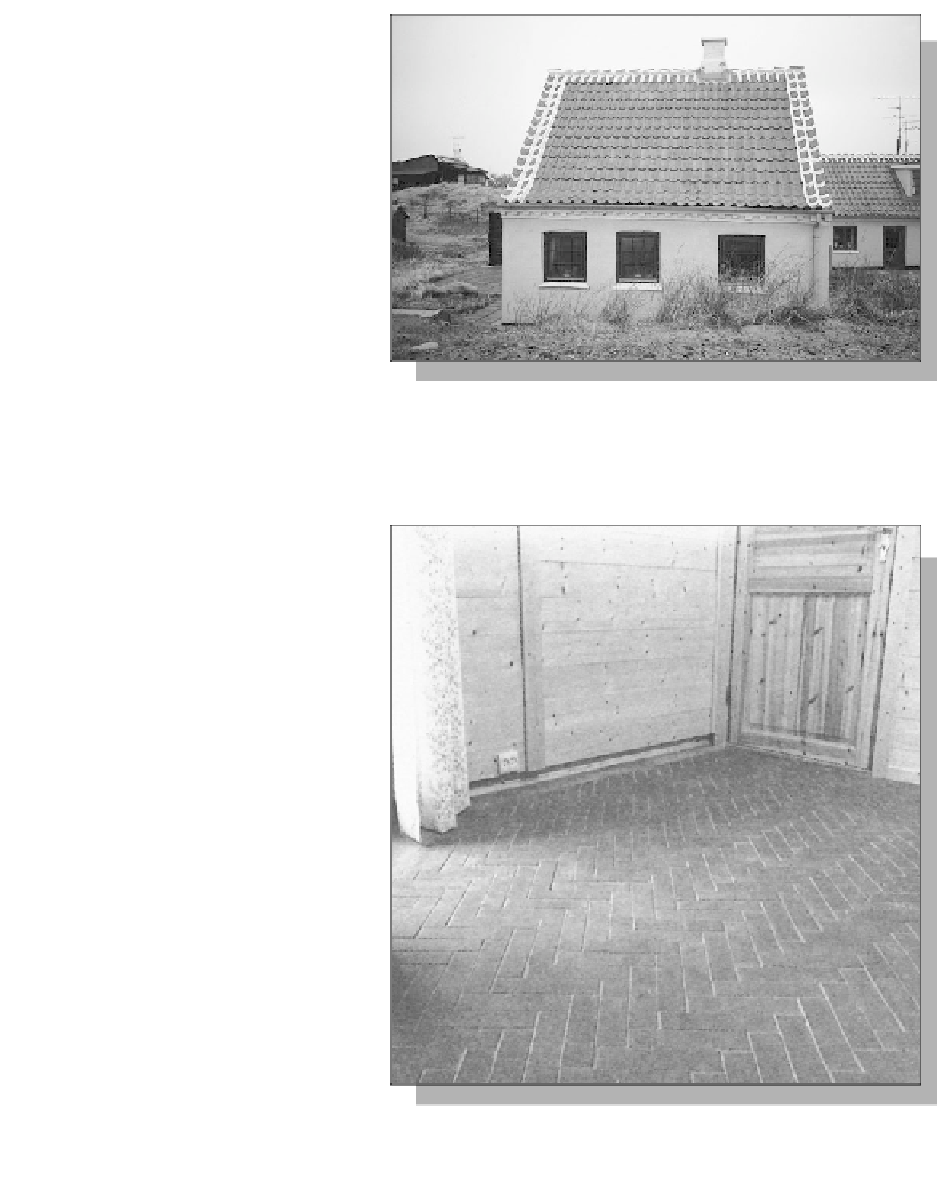Civil Engineering Reference
In-Depth Information
After jointing, a dry jointing material is
spread over the whole surface in a
thin layer. This lies in place until the
laying pattern of the tiles becomes vis-
ible. The surface is then cleaned, and
the floor is ready after four days cur-
ing.
Wall tiles are mounted in almost the
same way with the same mix of
cement and sand. It is an advantage if
the back of the tile is textured and has
a semi-porous surface. Laying floor
tiles is relatively straightforward, but
putting tiles up on a wall needs a well-
trained professional.
Figure 15.7: In exposed coastal areas of Denmark, the roof tiles
along the ridge and the gables are fixed with lime cement mortar
to prevent them blowing off.
Floor finish of bricks laid
in sand
A brick floor can be laid without
cement using both well- and low-fired
bricks. It is important to choose a brick
with a smooth surface. A 3-5 cm-thick
layer of sand is spread on a layer of
stabilized insulating loose fill, and the
sand is then dampened and com-
pressed. The size of the grains must
not be more than 5 mm and well-grad-
ed. The bricks are laid and knocked
into place by a rubber hammer and
sand is poured into the joints. The
whole floor is then sprinkled with lin-
seed oil, and this treatment is repeat-
ed twice at intervals of one week. This
binds the sand in the joints and makes
the brick surface easy to clean. It is
also possible to treat just the joints
with linseed oil, and treat the bricks
with a soft soap. This floor surface can
be used in both houses and public
buildings.
Earth surface materials
An earth rich in clay can be
rammed into a reasonably good
Figure 15.8: Floor covering of bricks in sand, which are easy to
remove and re-use.
Source: Gaia Lista, 1988

